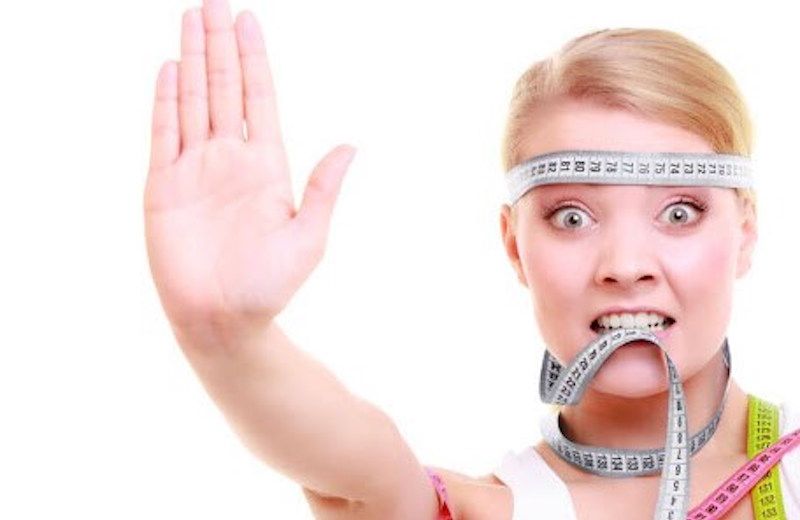Do you feel like you’re doing everything within your power to lose weight, but you’re just not seeing any results? At its core, losing weight is relatively simple: you have to burn more calories than you take in. Simple doesn’t mean easy, though, and even if you track each and every calorie that goes into and out of your body, you may still not be seeing the results you hoped for. (Plus, counting calories is tedious, and you may simply not be happy doing it.)
What kind of calories are best? What sort of exercise fits in with your lifestyle? Is all this work really worth it? The questions are endless, and when you answer some of them, they just seem to bring up brand new questions.
The bottom line is that losing weight can be extremely difficult. If you’ve plateaued after losing a certain amount of weight, or you’ve tried to start losing but can’t seem to get the scale to budge, you may be making a common, easy-to-fix mistake.

Here are six common mistakes that a lot of people make when trying to lose weight. By figuring out what you’re doing wrong, you can take the steps to fix the problem and, hopefully, get back on track to reaching your goal weight.
1. Scale Management
The scale can be a relatively good tool for measuring your weight loss progress, but it also has major drawbacks. For starters, if you don’t love the number you see, you could easily get discouraged and fall off the wagon.
If you weigh yourself daily, or even weekly, you can get so wrapped up in the number you see that you’ll miss all of the other progress you’re making. For example, if you’re working out while sticking to a healthy diet, you may be gaining muscle, which means the scale won’t change as much as you may want, but you’re still losing plenty of fat and inches.
There are several factors that go into how much you weigh, including normal, daily fluctuations that can change the number by as much as four pounds. Even retaining water can show up on the scale as more weight, when really all you need to do is lose that water weight, which isn’t very difficult.
In addition to weighing yourself, it’s good to have other ways to track your progress. Try on the same pants every week to see if they feel different. Measure your thighs, hips, waist and arms to see if they’re going down in size.
2. Not Eating
Since you need to get rid of more calories than you take in, a common strategy to lose weight is to seriously cut the number of calories you consume on a daily basis. This can have the wrong effect on your body, though, and actually reverse your progress.
You should never eat less than 1,000 calories per day. If you cut calories beyond this, you can slow down your metabolism, which will make it harder to lose weight, and you’ll lose muscle at the same time.
Also, if you try to limit what you eat too much, you won’t have the energy to work out and you may get so hungry that you end up eating way too much in one sitting.
3. Lack of Exercise
As you lose weight, it’s likely that you’ll lose some muscle as you lose fat ¬¬– this is normal, and not something to be too concerned with. However, if you don’t do any exercise at all at the same time that you restrict your calorie intake, you could lose more muscle mass than you want, which can limit how effective your metabolism is. If you have a low metabolic rate, you won’t burn fat calories as efficiently as possible, and you may plateau in your weight loss. Exercising limits the amount of muscle you lose, and the leaner muscle you have, the more efficient your body will be at losing weight.
4. Exercising Too Much
While you don’t want to be a couch potato while you try to lose weight, you also have to be careful that you’re not over-exercising. Too much exercise can have a negative effect on your stress level, because it makes your adrenal hormones less efficient at regulating your body’s response to stress.
When you’re stressed, the hormones that your brain releases will give you a burst of energy and cortisol, which in turn make you extremely hungry. Since you’re stressed, odds are that you’ll reach for junk food during these times, which will slow down, or even reverse, your weight loss.
5. Lack of Protein
When it comes to the type of calories you’re consuming to lose weight, you want to make sure there’s plenty of protein in your diet. Protein makes it easier to stick to a healthy diet because it makes you feel full and suppresses your appetite. You won’t feel as hungry as often as you used to, so even if you’re not yet reaching for the healthiest foods every time you eat, having enough protein means you’ll be eating less overall. It also makes your metabolism more efficient and protects your lean muscle as you lose weight.
6. Lack of Fiber
In addition to getting enough protein, you always want to make sure you’re eating enough fiber every day. Viscous fiber turns into a water-holding gel that will make you feel full for longer. When you add fiber to your diet, you’ll reduce your calorie intake overall because you won’t be hungry as often.
Keep in mind that you’ll want your fiber to come from actual foods instead of a supplement. Most fiber supplements won’t help you much when it comes to weight loss. Beans, oats, whole grain bread, and certain green vegetables are excellent sources of fiber.